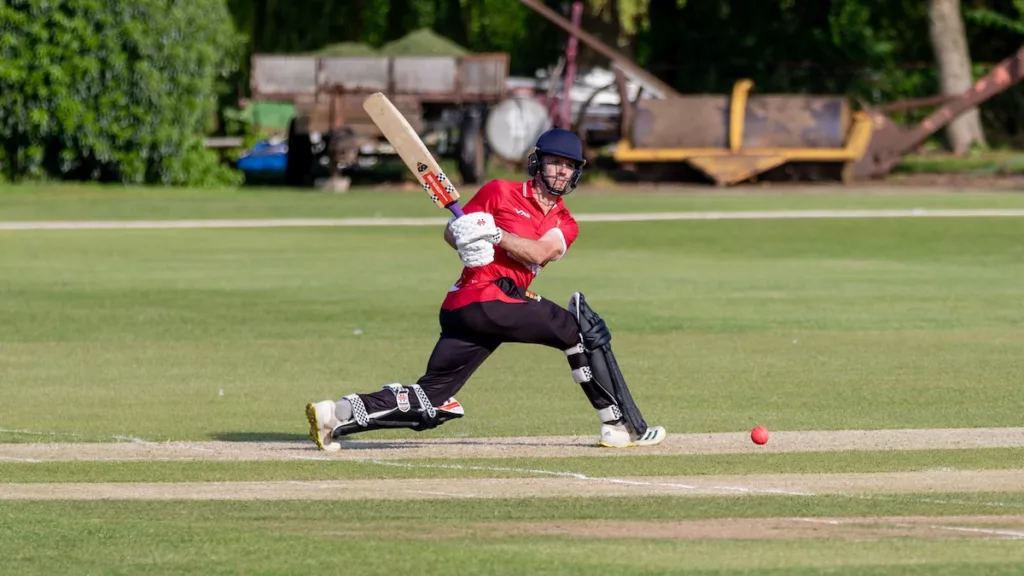
I hope you enjoy reading this blog post.
James Breese, Cricket Matters FounderIf you need my help with cricket coaching, strength and conditioning, injury rehab, or nutrition, click here.
What’s the best diet for cricketers?
It’s not a simple answer.
So if you want to know what the best diet for a cricket player is, I’m going to explain, based on my professional experience, why it’s not that straight forward.
Let’s dive in.
Table of Contents
Introduction
When cricketers commit to improving their diet, they often go online seeking advice about the best path to take.
They are often faced with various articles, each featuring titles like “Try This New Diet Plan” or “Which Foods You Should Start/Stop Eating”.
Much of this advice will seem contradictory or tailored to a specific audience, one that subscribes to a particular nutritional camp or school of thought, and certainly not one that has the best interests of cricketers at heart.
What should become apparent is that one person’s dietary paradise is another person’s dietary hell.
The main issue I have with searching for advice about diet on the internet is a lot of what’s out there is based on opinion rather than evidence, fuelled by idealism or moral and ethical choices rather than tangible and nutritional benefits.
While these causes are often admirable and usually healthy in their own way, they don’t work for everyone.
Not every cricketer needs to cut out meat or dairy to improve their health or cricketing performance. In some instances, doing so could be detrimental.
The same goes for going on or off a plant-based diet.
The fact is, nutrition and diet advice for cricketers always depends on the individual concerned.
There’s no one diet that suits everyone.
Another issue is that some diet plans are geared toward weight loss rather than actual nutrition.
While there is a correlation between the two, what one person should or should not eat to lose weight can be very different from what individuals looking to generally improve their diet eat.
Not everyone trying to increase their nutrient intake necessarily wants or needs to lose weight.
For some people, losing weight could actually be counterproductive to their health, even dangerous.
A prime example of this is high protein diets, which are usually associated with gym goers looking to build muscle mass.
Advocates of these diet plans may recommend them to their friends without realizing that this sort of diet isn’t suitable for everyone.
While a diet high in lean protein has many health benefits, particularly as it relates to fitness and strength building, for some people, it’s not ideal or recommended.
Far from it in some cases.
Building muscle mass and improving overall health through diet are not the same thing.
The list goes on, be it gluten-free diets, low carb diets, or the increasingly popular paleo diet (which involves only eating foods our ancestors 100,000 years ago had access to) – each nutritional camp seems to think they have the answer to better health.
They might, to some extent, but it’s far more complicated than it may seem.
Science vs Zealotry

The science of nutrition in terms of weight loss for cricketers is simple: Calories in, calories out.
Yet what people should or shouldn’t be eating seems to change with the wind.
Knowing who to listen to is a minefield too.
Advocates of almost all nutritional camps can sometimes become overzealous in their efforts to convince others of the benefits.
Much of their advice is based on the worldview of those who already follow it.
They assume that their strategy is a one size fits all approach.
They believe because it works for them, it will work for everyone.
This is where many diet advocates go wrong.
They fail to understand that different people have different needs.
It’s not about opinions; it’s about science and objectivity.
James Breese
And some dietary information is actually just marketing masquerading as advice.
Or worse, marketing masquerading as science, with facts chosen based on how well they support the advert, not the consumer.
It can be frustrating for the average cricketer, someone who’s simply looking for some objective advice based on nutritional science.
In a vast ocean of contradiction and opinion, objective truths seem hard to find.
But they do exist.
There are commonalities between each of these nutritional camps – and wisdom to be gleaned for those who take the time to find them.
Introduction to Nutritional Diversity in Cricket

Challenging the One-Size-Fits-All Diet Approach
The idea or belief that there exists a singular, optimal diet for all cricketers is a notion ripe for reassessment.
In cricket, as in life, diversity reigns supreme – and this truth extends emphatically to nutrition.
A one-size-fits-all dietary plan is not only impractical but also neglects the rich tapestry of individual needs and circumstances that vary dramatically among players.
From varying physical roles on the pitch to unique metabolic rates and cultural dietary preferences, the spectrum of nutritional needs in cricket is as varied as the game itself.
The Role of Personalisation in Cricket Nutrition
Embracing personalisation in nutrition is a fundamental approach to optimising a cricketer’s performance and well-being.
Personalised nutrition goes beyond mere dietary choices; it encompasses a holistic understanding of an individual’s lifestyle, health objectives, and the demands placed on them by the sport.
This nuanced approach allows for dietary plans that adapt dynamically to the cricketer’s life, reflecting changes in training intensity, match schedules, and even seasonal variations.
It’s about crafting a diet that supports not just the athlete on the field, but the individual behind the sport.
Factors Influencing a Cricketer’s Diet

Physical Demands and Position-Specific Needs
Understanding that each role within a cricket team comes with its unique set of physical demands is crucial.
A fast bowler, for instance, might require a diet richer in proteins to aid muscle recovery, while a batsman might focus more on carbohydrates for sustained energy.
Tailoring nutrition to these position-specific needs is vital for maximising performance and reducing the risk of injury.
Age, Metabolism, and Genetic Factors
A player’s age is a significant factor in determining their nutritional requirements.
Younger players, with their typically higher metabolic rates and different hormonal profiles, have different needs compared to more experienced players.
Furthermore, genetic factors play a subtle yet significant role in nutrition – from how one metabolises certain foods to specific nutritional tolerances and allergies.
Recognising these inherent differences is key to developing a diet that supports both health and performance.
Cultural and Dietary Preferences
Cricket, a sport enjoyed worldwide, sees a confluence of diverse cultures and dietary habits.
Respecting and integrating these cultural food preferences is not only important for a player’s comfort and satisfaction but also for inclusivity and team cohesion.
Whether it’s accommodating vegetarian diets or respecting religious food practices, understanding and embracing these diverse dietary habits can have a positive impact on team dynamics and individual well-being.
Building a Flexible Nutritional Framework

Core Nutritional Principles for Cricketers
At the heart of a cricketer’s diet lies the balance of macronutrients – proteins, carbohydrates, and fats – and micronutrients, like vitamins and minerals.
This balance is crucial not just for peak performance, but also for maintaining overall health.
Proteins support muscle repair, carbohydrates provide energy, and fats contribute to overall health.
Vitamins and minerals, though needed in smaller quantities, play critical roles in energy production, immune function, and bone health.
A nuanced understanding of these nutritional building blocks forms the foundation of a cricketer’s diet.
Adapting to Training and Match Schedules
A cricketer’s diet should be as dynamic as their training and match schedules.
During intense training periods, increased caloric intake, particularly in the form of proteins and carbohydrates, may be necessary.
Conversely, during off-seasons or lighter training days, a reduction in calorie intake can help in maintaining an optimum fitness level.
Aligning dietary intake with the cricket calendar ensures that the body has the right fuel at the right time.
Monitoring and Adjusting Diet Over Time
The only constant in a cricketer’s nutritional plan should be change.
Continuous monitoring and adjustment of the diet are essential, considering factors such as changes in physical demands, age, health status, and personal goals.
This may involve regular consultations with nutritionists, keeping food diaries, or even using technological tools to track and analyse dietary intake.
Such vigilant assessment allows for the tweaking of dietary plans to meet evolving needs, ensuring sustained performance and health.
How Processed Food Affect‘s a Cricketers Diet

Then we have the processed food effect.
The problem with processed food is that processed foods are often lower in nutrients than unprocessed food.
The very act of processing ingredients tends to reduce the nutrients they contain.
The more processed the food is, the less nutritional value there will be.
When someone cuts out processed food and eats only natural unprocessed food, they’re likely to notice improvements in many aspects of their life.
Maybe they have more energy, sleep better, or simply feel healthier, all from improving their diet.
This is why so many nutritional advocates can become overly enthusiastic about their particular philosophy.
They are living proof of the difference it makes.
The reason why most dietary advocates dislike processed food is that it is speculated that these foods are designed to specifically increase cravings and tend to be low in fibre and nutrients.
Producers want us to enjoy their product, so they artificially enhance the flavor to encourage us to purchase and consume more of it.
This means we’re likely to eat more food that’s bad for us; as it takes longer for satiation to set in.
Naturally, when this is repeated over time, our health can suffer.
This means we can safely confirm that the first step to eating a more balanced and healthy diet is to cut out processed food.
Of course, we’re not suggesting cutting it out completely; that might not be realistic.
The occasional treat (such as sweets or fast food) can be fun and convenient, but we recommend making an effort to buy fresh and natural ingredients instead of processed food whenever possible.
For some of you, this may mean learning how to cook more recipes.
On top a mutual dislike of processed food, every camp insists that followers pay more attention to what they eat and take their diets seriously.
That’s a basic tip that we can get behind.
They also support and promote engaging in regular exercise alongside their dietary ideas.
While this doesn’t involve food consumption, it does defend the idea that nutritional camps legitimately mean well.
Their advocates want you to feel as happy and healthy as they do.
The Cricket Matters Approach to Diet
In our view, two aspects of nutrition are most important: Balance and individual difference.
Because knowing what works for each individual is for them and their doctor to decide, we like to focus on balance.
We cherry-pick certain aspects from different nutritional schools of thought to create a balanced diet and one that genuinely improves health in the way our clients need it to.
Even though we all have different dietary requirements, some things will work for everyone, at least to some extent. Eating fruit and vegetables for example.
Let’s not forget that each nutritional camp exists because it helped some people see results.
There are almost certainly lessons that can be taken away from each, even if they don’t work for every person.
Despite their apparent differences, there are certain things each nutritional camp advocates that are in line with every other.
We examined not only what separates these various camps but also what connects them to figure out how to help every individual take advantage of a truly healthy balanced diet.
For starters, every school of thought asks their followers to only eat quality ingredients.
None of the nutritional camps referenced above are recommending we eat more processed or junk food.
All of them, be it plant-based, low carb, high-protein, or paleo diet advocates, agree that ingredients should be natural, nutrient-rich, and as minimally processed as possible.
How to Create Your Personal Cricket Nutrition Plan

Steps to Identifying Personal Nutritional Needs
Creating an individualised cricket diet starts with understanding one’s unique nutritional requirements.
The first step is a thorough assessment of personal goals, fitness levels, and physical demands of the sport of cricket.
This includes considering factors such as body composition, metabolic rate, and personal fitness objectives.
Next, it’s important to track and analyse current eating habits – what one eats, how much, and when.
This provides a clear starting point for making adjustments. Then, one should set realistic and achievable dietary goals.
Whether it’s improving stamina, increasing muscle mass, or maintaining energy levels throughout the day, these goals should guide the dietary planning process.
Collaborating with Nutritionists and Dieticians
While self-assessment is a good starting point, professional guidance can make a world of difference.
Working with a nutritionist or dietician, especially one with experience in sports nutrition, can provide insights beyond general dietary guidelines.
These experts can help in tailoring a diet plan to the specific needs and goals of a cricketer, taking into account individual health concerns, dietary preferences, and lifestyle factors.
They can also assist in periodic reviews and adjustments of the diet plan, ensuring it remains aligned with changing training demands and performance goals.
Final Thoughts: What’s the Best Diet for Cricketers?

To conclude, we believe that no single nutritional camp offers the best diet plan for cricketers.
There’s honestly no such thing.
Our individual dietary needs are too varied and complicated.
Some plans may work well for certain people, but most will benefit from a balanced combination of various nutritional plans.
Taking advantage of the boons each plan evidently provides may be the best path to a balanced and healthy diet.
Borrowing wisdom and elements from each may be the closest thing we’ll ever have to a perfect cricket diet plan.
I wish you the best of luck navigating this minefield.
However, if you do want any help, that’s what our nutrition coaching program is all about.
Feel free to book in for your FREE strategy call with us anytime.
We’re here to help.
Further Reading
FAQs
What Constitutes a Balanced Diet for Cricketers?
For cricketers, fundamental health habits include maintaining regular physical activity, ensuring adequate hydration, and getting sufficient sleep. Regular walking can boost stamina, while adequate water intake is crucial for hydration during training and matches. Sufficient sleep aids in recovery and enhances overall performance.
How Does Nutrition Impact a Cricketer’s Performance?
Proper nutrition significantly impacts a cricketer’s performance. A balanced diet provides the necessary energy for playing and aids in faster recovery post-match. It also contributes to better concentration and focus, essential for the mental aspects of cricket.
Are There Specific Dietary Recommendations for Bowlers vs. Batsmen?
Bowlers may need more protein for muscle recovery and strength, given the physical demands of bowling. Batsmen might focus more on carbohydrates for sustained energy. However, both require a balanced intake of nutrients.
What Role Do Hydration and Recovery Foods Play in a Cricket Diet?
Hydration is crucial for maintaining performance, with water being the primary source. Post-exercise, recovery foods should include a mix of carbohydrates and proteins to replenish energy stores and aid in muscle recovery.
What is the Best Diet for a Cricketer?
The best diet for cricketers depends significantly on individual needs, as the sport is diverse with varying physical demands. There’s no one-size-fits-all solution. Factors like a player’s role, body type, metabolism, and individual health concerns dictate their ideal nutritional plan. It’s essential to tailor diets to individual needs, focusing on a balance of carbohydrates, proteins, fats, and essential vitamins and minerals, while also considering specific training and match requirements.



![[Calculator] How Many Calories Does a Cricketer Need? 5 Calories for Cricketers](https://www.cricketmatters.com/wp-content/uploads/2024/05/Calories-1024x536.png)